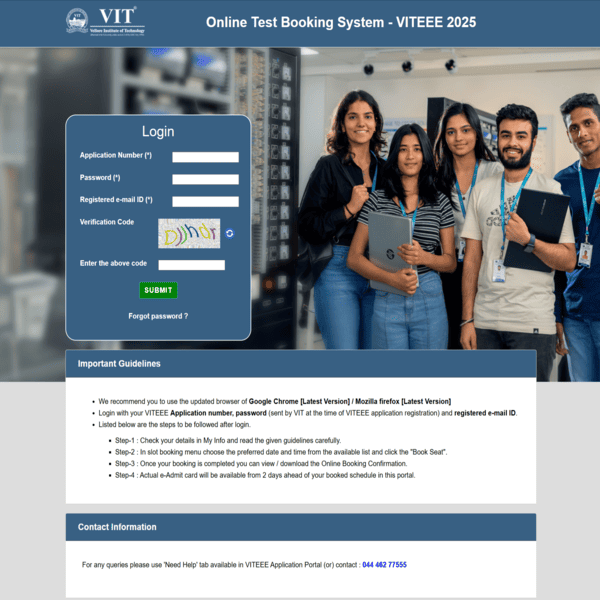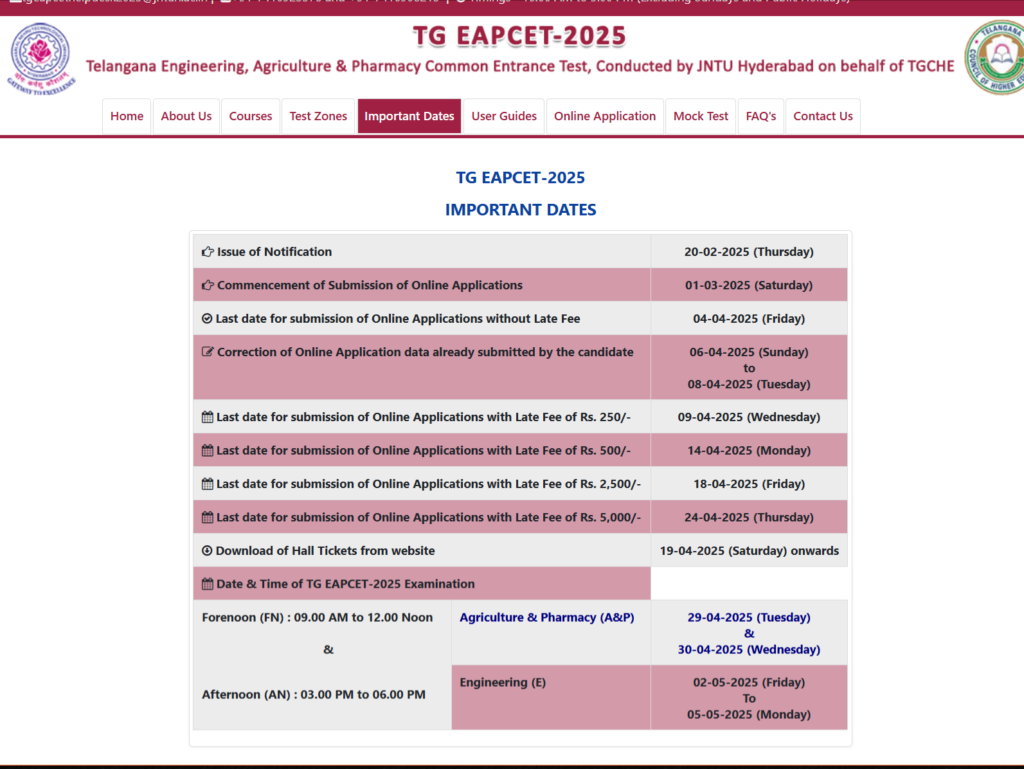JEE Main Exam Pattern 2026 – In the previous edition, the JEE Main exam pattern was revised for all THREE papers: Paper 1 (B.E./B.Tech), Paper 2A (B.Arch), and Paper 2B (B.Plan).
As per the revised format, Section B (Paper 1) included 5 mandatory questions per subject, with no optional questions. Meanwhile, Mathematics section of Papers 2A and 2B also had no optional questions.
It is unlikely that the JEE Main 2026 exam pattern will be revised again.
JEE Main 2026 exam will be conducted in 13 languages. Paper 1 will include 75 MCQs of 300 marks.
Meanwhile, Paper 2A (B.Arch) will contain 77 questions worth 400 marks, and will be conducted online, except for the drawing section, which will be offline-based. Finally, Paper 2B (B.Plan) will consist of 100 MCQs totaling 400 marks and will be conducted online.
NTA will conduct the JEE Main 2026 (Session 2) exam in two sessions – January & April.
When preparing for the exam, also refer to the JEE Main syllabus.
Latest Updates:
Table of Contents
JEE Main Exam Pattern 2026 for BTech/BE (Paper 1)
The revised exam pattern for the JEE Main 2026 (Paper 1) is given below.
| Particulars | BTech/BE |
| Mode of exam | Online |
| Number of sections and subjects | 3 (Physics, Chemistry, and Mathematics) |
| Duration of exam | 3 hours (180 minutes) 4 hours for PwD candidates |
| Type of questions | MCQs: 4 options with only 1 correct option Numerical Value Questions: Questions whose answers are to be filled in as a numerical value |
| Section A (MCQ) | Mathematics: 20 Physics: 20 Chemistry: 20 |
| Section B (Numerical Value) | Mathematics: 5 Physics: 5 Chemistry: 5 Note: All five questions will be mandatory |
| Total questions asked in JEE Mains exam | 75 |
| Marking scheme | MCQs: Correct Answer or the Most Appropriate Answer: Four marks (+4) Incorrect Answer: Minus one mark (-1) Unanswered / Marked for Review: No mark (0) Numerical Value Questions: Correct Answer: Four marks (+4) Incorrect Answer: Minus one mark (-1) Unanswered / Marked for Review: No mark (0) |
| JEE Mains Total Marks | 300 marks |
| Language of paper | Assamese, Bengali, Kannada, Malayalam, Marathi, Odia, Punjabi, Tamil, Telugu, Urdu in addition to Hindi, English, and Gujarati |
Also Read:
- Best Books for JEE Main 2026 – Study Material Recommended by Toppers
- How to Prepare for JEE Main Exam
- JEE Main Eligibility Criteria 2026 – Age Limit, Number of Attempts, Qualification
JEE Main 2026 Exam Pattern for B.Arch and B.Plan (Paper 2)
| Particulars | BArch Exam Pattern | BPlanning Exam Pattern |
| Mode of the Exam | Online – Mathematics and Aptitude Offline – Drawing Test | Online |
| Sections | The paper will have THREE sections: Drawing Mathematics Aptitude | Three Sections Mathematics Aptitude Planning |
| Duration of exam | 3 hours (180 minutes) | 3 hours (180 minutes) |
| Section & no. of questions asked from each section | Mathematics (Part I): 20 MCQs (Section A) and 05 (Section B) numerical value questions Aptitude Test (Part II): 50 MCQs Drawing Test (Part III): 02 | Mathematics (Part I): 20 questions and 5 Numerical Value Questions Aptitude Test (Part II): 50 MCQs Planning (Part III): 25 MCQs |
| Total questions | 77 | 100 |
| Type of questions | Mathematics: 20 MCQs and 05 questions with numerical value as answers Aptitude – MCQs Drawing: Questions to test the candidate’s drawing and sketching skills | Mathematics: 20 MCQs and 05 questions with numerical value as answers Aptitude – MCQs Planning – MCQs |
| Total Marks of JEE Mains | 400 marks Mathematics: 100 marks Aptitude Test: 200 marks Drawing Test: 100 marks | 400 Mathematics: 100 marks Aptitude Test: 200 marks Planning: 100 marks |
| Marking Scheme | MCQs: +4 marks for each correct answer and -1 mark for each wrong answer. Questions with numerical value answers: +4 marks for each correct answer and -1 for each wrong answer. Drawing Test: Two questions are evaluated out of 100 marks. | Questions with numerical value answers: +4 marks for each correct answer and -1 for each wrong answer. MCQs: +4 marks for each correct answer and -1 mark for each wrong answer. |
| Language of paper | Assamese, Bengali, Kannada, Malayalam, Marathi, Odia, Punjabi, Tamil, Telugu, and Urdu in addition to Hindi, English, and Gujarati | Assamese, Bengali, Kannada, Malayalam, Marathi, Odia, Punjabi, Tamil, Telugu, and Urdu in addition to Hindi, English, and Gujarati |
JEE Main 2026 Marking Scheme for BE/BTech & BArch/BPlan
The marking scheme of JEE Main 2026 for all three papers is given in the table below.
| Particulars | BE/BTech Marking Scheme | BArch Marking Scheme | BPlan Marking Scheme |
| Correct Answer | +4 marks | +4 marks | +4 marks |
| Incorrect Answer | -1 mark | -1 mark | -1 mark |
| Unanswered/ Marked for review | 0 marks | 0 marks | 0 marks |
| Marks per section | Mathematics: 25 questions = 100 marks Physics: 25 questions = 100 marks Chemistry: 25 questions = 100 marks | Mathematics: 25 questions = 100 marks Aptitude Test: 50 questions = 200 marks Drawing Test: 2 questions = 100 marks | Mathematics: 25 questions = 100 marks Aptitude Test: 50 questions = 200 marks Planning: 25 questions = 100 marks |
Important Topics in JEE Main 2026
The section-wise important topics for JEE Main 2026 are given below.
| Mathematics | Physics | Chemistry |
| Inverse Trigonometric Functions, Circles and Family of Circles, Sequence and Series, Probability, Vectors, Quadratic equations and expressions, Complex numbers, Matrices, Parabola, Hyperbola in coordinate geometry Functions Limits Continuity and Differentiability Application of derivatives and Definite integral in calculus. | Current Electricity & Heat Transfer, Dimensional Analysis, Gravitation & Electro-statistics, Geometrical Optics Waves & Sounds, Thermodynamics, Kinetic Theory of Gases and Rotational Dynamics Electromagnetic Induction. | Physical Chemistry: Mole concept & the concept of equivalents, Redox reactions, Electrochemistry, Thermodynamics, and Chemical Equilibrium Organic Chemistry: Carbonyl Compounds & their derivatives Inorganic Chemistry: Coordination chemistry, Chemical bonding, and Qualitative analysis |












